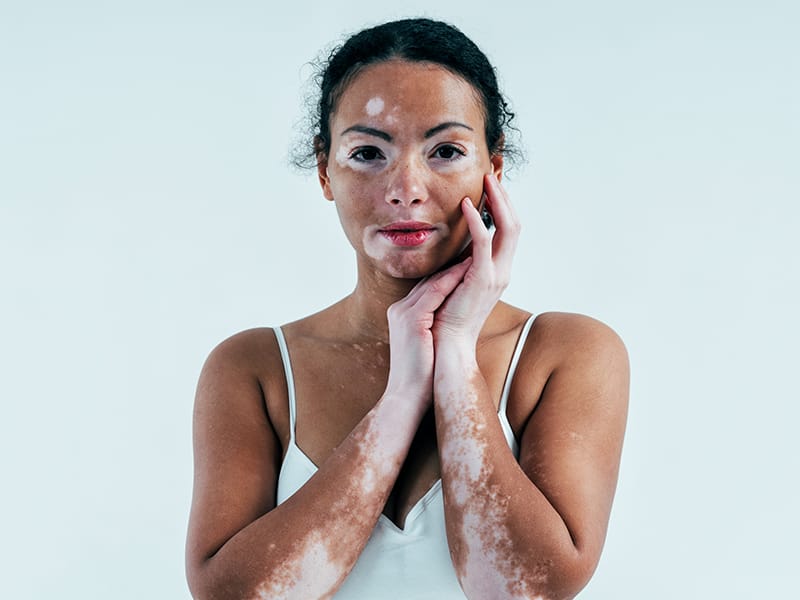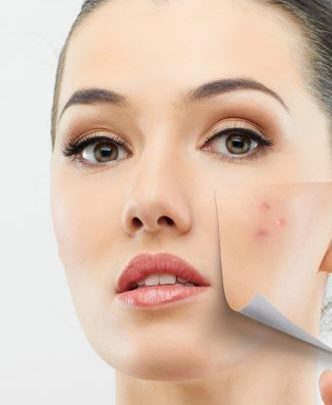
🌈 What Are Pigmentation Disorders?
Pigmentation disorders are conditions that affect the color (pigment) of your skin, hair, or eyes, primarily caused by an imbalance of melanin — the natural pigment produced by specialized skin cells called melanocytes.
These disorders result in either too much melanin (hyperpigmentation) or too little (hypopigmentation or depigmentation), leading to uneven skin tone or discolored patches.
🔬 Causes of Pigmentation Disorders
| Cause | Explanation |
|---|---|
| Genetic mutations | Inherited disorders like albinism |
| Sun exposure | Triggers excess melanin (especially UV rays) |
| Hormonal changes | Pregnancy, birth control pills (melasma) |
| Inflammation or injury | Post-inflammatory hyperpigmentation (PIH) |
| Autoimmune diseases | Like vitiligo, where the immune system attacks melanocytes |
| Medications or chemicals | Certain antibiotics, cancer drugs, or cosmetics |
🔍 Common Pigmentation Disorders
1. Hyperpigmentation (Too Much Pigment)
This results in dark spots or patches on the skin.
🟤 Melasma
- Brown or gray-brown patches
- Common on cheeks, forehead, upper lip
- Triggered by hormones and sunlight
🟤 Post-Inflammatory Hyperpigmentation (PIH)
- Dark spots after acne, burns, cuts, or rashes
- More common in darker skin tones
🟤 Sunspots (Solar Lentigines)
- Also called age spots or liver spots
- Caused by years of UV exposure
2. Hypopigmentation (Too Little Pigment)
This leads to light or white patches of skin.
⚪ Vitiligo
- Autoimmune disorder where melanocytes are destroyed
- Appears as white patches that can spread
- Can affect skin, hair, and mucous membranes
⚪ Albinism
- Genetic condition — complete or partial lack of melanin
- Affects skin, hair, and eyes
- Increased risk of sunburn and vision problems
⚪ Tinea Versicolor
- Fungal infection that disrupts pigment
- Causes light or dark patches, often on back or chest
⚪ Pityriasis Alba
- Affects children and teens
- Light, scaly patches on face, arms, neck
- Usually resolves on its own
💡 Diagnosis
A dermatologist may:
- Use a Wood’s lamp (UV light tool) to examine skin changes
- Conduct a biopsy if needed
- Review medical history and medication use
- Perform blood tests (for autoimmune diseases or hormone imbalances)
🩺 Treatment Options by Condition
🔹 A. Treatments for Hyperpigmentation
| Treatment Type | Details |
|---|---|
| Topical creams | – Hydroquinone: Gold standard skin lightener (used short-term) – Retinoids (tretinoin) – Azelaic acid – Vitamin C: Antioxidant that brightens skin – Kojic acid, niacinamide |
| Chemical peels | Mild to moderate acids (glycolic, salicylic) exfoliate the skin and fade dark spots |
| Laser therapy | Targets deeper pigmentation, e.g. Q-switched laser, IPL (intense pulsed light) |
| Microneedling | Encourages skin renewal and helps with post-acne marks |
| Sun protection | Daily use of broad-spectrum sunscreen (SPF 30+) is mandatory |
🛑 Avoid skin-lightening products with mercury or illegal steroids — especially common in unregulated creams.
🔹 B. Treatments for Hypopigmentation
| Condition | Treatment Options |
|---|---|
| Vitiligo | – Topical corticosteroids or calcineurin inhibitors (tacrolimus) – Phototherapy (UVB) – Depigmentation therapy for widespread cases – Skin grafting or micropigmentation (tattooing) in stubborn areas |
| Albinism | – No cure – Protect from sun (SPF 50, sunglasses, clothing) – Regular eye checks |
| Tinea Versicolor | – Antifungal creams or shampoos (selenium sulfide, ketoconazole) – Recurrence is common — maintain dry, clean skin |
| Pityriasis Alba | – Mild moisturizers – Low-dose steroid creams – Often self-resolves in time |
🌞 Importance of Sun Protection in All Cases
UV radiation worsens both hyper- and hypopigmentation. Regardless of your skin condition:
- Always wear SPF 30 or higher
- Choose mineral sunscreens (zinc oxide, titanium dioxide)
- Reapply every 2–3 hours, especially outdoors
- Wear hats, sunglasses, and protective clothing
🧴 Natural Remedies: Are They Effective?
Natural ingredients like licorice root, green tea extract, aloe vera, and turmeric may have mild pigment-regulating effects — but they work slowly and results vary.
Use only dermatologist-approved natural products to avoid irritation or worsening pigmentation.
🧠 Psychological Impact and Support
Pigmentation disorders — especially vitiligo, melasma, and albinism — can affect self-esteem and mental health.
What Helps:
- Support groups and counseling
- Camouflage cosmetics (color-correcting makeup)
- Talking to a dermatologist about realistic treatment goals
🧾 Summary Table: Common Conditions & Treatments
| Disorder | Type | Treatment Highlights |
|---|---|---|
| Melasma | Hyper | Hydroquinone, sunscreen, peels |
| PIH (acne scars) | Hyper | Retinoids, azelaic acid, microneedling |
| Sunspots | Hyper | Laser therapy, vitamin C, sunscreen |
| Vitiligo | Hypo | Steroids, UV therapy, micropigmentation |
| Tinea Versicolor | Hypo | Antifungals (topical/oral) |
| Albinism | Genetic | No cure – strict sun & eye protection |
✅ Final Tips for Managing Pigmentation
- Consistency is key — even the best creams take 8–12 weeks.
- Sun protection is non-negotiable.
- See a dermatologist early — avoid self-medication.
- Track your triggers (sun, stress, hormones).
- Focus on skin health over perfection.
